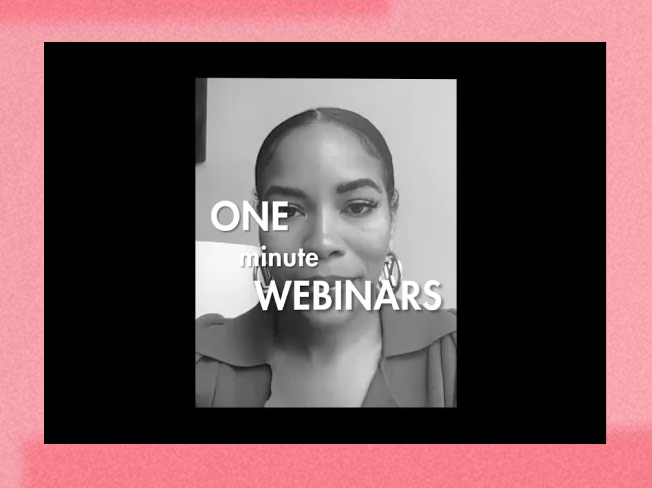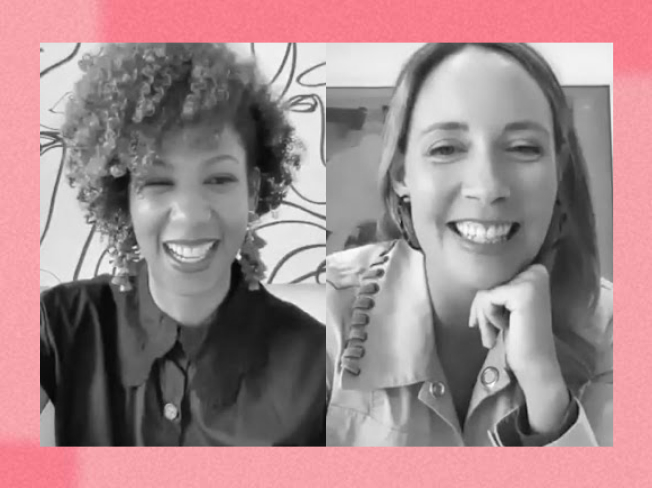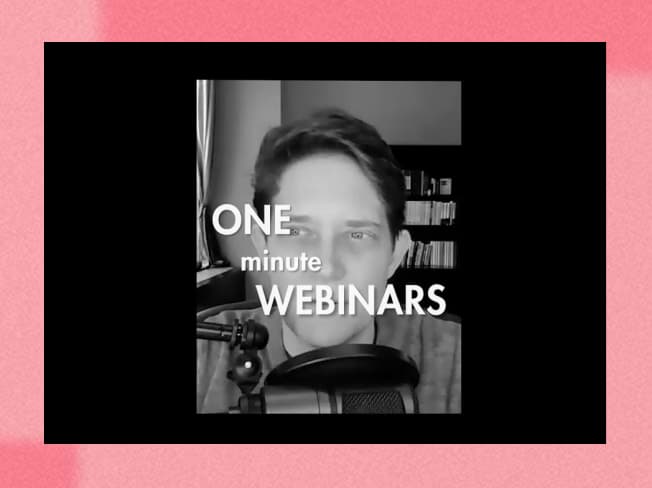Networking Strategies for Founders | Tory Burch Foundation
Content Library Grow my business
Networking Strategies for Founders
J. Kelly Hoey on new ways to build connections.
464 Views
1 Like
7 min read
Networking can be uncomfortable at best, and stressful at worst. Thankfully, J. Kelly Hoey, the expert behind the book Build Your Dream Network and the podcast of the same name, helped our community to rethink how we extend and nurture our networks during a recent webinar. “Networking needs a rebrand. When we think about what networking is, we have a really limited, narrow kind of view,” she said. Hoey wants us to reframe networking as “every human interaction.”
She shared insight to take the awkwardness out of networking, while focusing on authentic connection.
YOU’RE ALREADY DOING IT.
You build relationships every time you relate to another person. To strengthen your connections with people you already know, think of every touchpoint as a chance to share a bit about yourself or your company. “You have your email, you have your email signature line, you have your company website,” Hoey explained. Consider sharing your LinkedIn profile or latest press in your email signature as a small step toward starting a genuine conversation with someone. What value do your marketing newsletters offer? Is there a special greeting your administrative staff uses when they answer the phones? “That’s all part of your networking toolkit.”
YOUR NETWORK IS BIGGER THAN YOU THINK IT IS.
It’s important to go to industry events to meet other entrepreneurs, but there’s a good chance you already know quite a few people who can boost your business in other ways. “Part of your ability to build networks is being that great colleague,” explained Hoey. “How do you mentor? How are you a good mentee?” These are relationships you’ve spent a long time building, ones that you can leverage when you need help.
Don’t think the people you already know can help you? They’ll surprise you. “Your network has networks,” Hoey reminded our community. “Don’t assume just because someone’s an intern, or a freelancer, a service provider, your neighbor, or a mom at your kids’ play school, that they don’t have a whole community that could be brought to bear to help your business.”
Networking is always based on generosity, and the most generous thing you can do is meet someone where they are.
THINK WHAT, AND THEN WHO.
Before blasting everyone you know with a generic SOS, it’s important to get really clear on what you want help with so you can make a targeted ask, Hoey advised. “Don’t be afraid to be specific. That helps your network help you.” Save your connections the trouble of doing guesswork or asking several follow-up questions.
Identifying exactly what you want will also determine who you ask or what your next steps are. “The tactic comes last,” she said.
It’s especially important for newer founders reaching out to well-established people to do their homework before reaching out. Instead of seeking 15 minutes of general advice, ask a specific question “that they are uniquely positioned to answer because they’ve conquered the challenge you’re facing,” she advised. “Show the seasoned founder that you’ve researched the problem, and pinpointed why you believe they have the ability to answer your question.”
More inexperienced founders often have two major concerns when trying to add other founders to their network: that they don’t have anything to offer because they’re so new, and that more established entrepreneurs won’t want to bother with them. “Switch up your mindset on what your networking ‘give’ is in this situation, and don’t assume the other people aren’t interested in mentoring or helping unless they get a favor in return from you,” Hoey urged. Besides, focusing only on your idols can make you miss the influential and giving people right around you. “One of the most powerful networks you have as a founder are your peers: those who are facing similar challenges day in and day out.”
BE GENTLE WITH YOUR CONTACTS.
Of course, you want to be thoughtful, even while you’re being very direct. “It’s not only what you ask for, and who you ask–it’s about thinking about them and their needs.” Has someone just transitioned to a new role? Is it the start of their business’ busiest season? Give them extra time to answer you, or hold off on reaching out until later. Also, think about the medium they seem to prefer for communication. “Networking is always based on generosity, and the most generous thing you can do is meet someone where they are,” Hoey said. “Understand what is going on in their lives, and that their communication and interaction preferences may not align with yours.”
INTROVERTS CAN DO IT, TOO.
Though many think extroverts are the best at “selling” themselves and meeting new people at industry events, introverted people have unique skills when it comes to building new connections. “I think introverts are more considerate, deliberate and focused,” shared Hoey. or example, instead of pushing yourself to shake everyone’s hand at an industry mixer, focus on learning about a few people. Ask questions that invite them to share their insight; offer yours, too.
FOLLOW UP THE RIGHT WAY.
“I think the failure to follow up is the number-one networking mistake,” Hoey told our audience. Tailor your follow up to your new contact.
Following up can look like asking for feedback after a rejection or keeping tabs on someone you admire and engaging them in a conversation about recent successes. “You may actually turn them into a raving fan because of the way you have followed up and stayed in touch.” Another great way to strengthen connections and follow up is by letting people actually know what you’re doing with the information and advice they’ve given you.
Not everyone returns follow-up messages, no matter how thoughtful the message are. It’s frustrating, but Hoey advised our community to maintain perspective and the generosity that for her is so central to networking. “I’ve thought to myself, ‘if it’s important, people will email me back. I have to stop freaking out about this.’”
DIGITAL NETWORKING IS ESSENTIAL FOR REAL-WORLD RESULTS.
Making online connections is vital to growing your business or career. Remember, many of the same rules apply online as they do when face-to-face. At a time when so many events happen virtually, it’s tempting to, say, just paste your LinkedIn URL in the Zoom chatbox and ask for connections, but that’s no way to foster genuine connections. “Would you say that to someone’s face if you were talking to them at a conference? I don’t think so, so don’t do it here,” Hoey admonished. “This is where you start the dialogue.”
Each social network has its own uses, so treat them accordingly. “Twitter is a great cocktail party. Facebook is for friends and family. LinkedIn is the office. How can you have water cooler conversations?” It’s overwhelming to be on every social platform, so choose carefully.
Hoey recommends identifying like-minded people in any virtual space that you can turn to, and who can turn to you (she recommended asking contacts ‘how can I help?’ on a regular basis). Consider inviting people from a Zoom conference into a private room to keep the conversation going. Comment on LinkedIn posts and post your own. “Share ideas, engage in ideas, and you will grow and expand your network,” she said.
Help an entrepreneur by upvoting





